Molecular cloud skeleton
Side-by-side comparison of molecular cloud gas and its underlying "skeleton" (or network of filaments), as traced out by the medical software, AMIRA:
Molecular cloud formation
The following movies show the formation of molecular clouds in environments of either high or low shear. The color gives the column density of the gas, and increases from black to red. Black hatches mark areas where star formation is beginning to occur.
Low shear environment
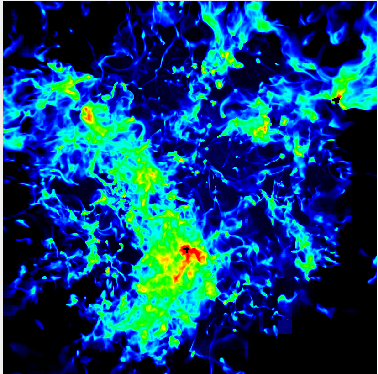 Top-down view. The low degree of shear in the environment enables gas to condense into molecular clouds. There are various fluid instabilities operating in the gas, which creates the turbulent, filamentary structure. (Link to movie here).
Top-down view. The low degree of shear in the environment enables gas to condense into molecular clouds. There are various fluid instabilities operating in the gas, which creates the turbulent, filamentary structure. (Link to movie here).
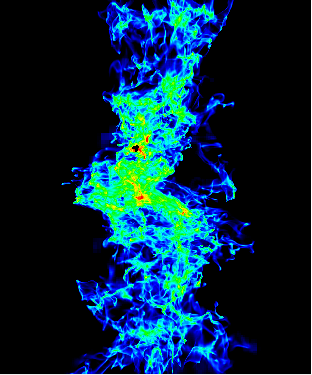 Side-view. (Link to movie here).
Side-view. (Link to movie here).
High shear case
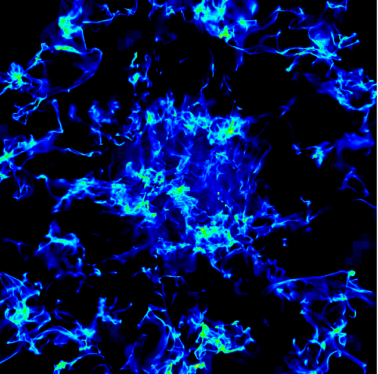 Top-down view. Shearing motions in the environment prevent the gas from aggregating into high-density structures. Star formation is also effectively inhibited. (Link to movie here).
Top-down view. Shearing motions in the environment prevent the gas from aggregating into high-density structures. Star formation is also effectively inhibited. (Link to movie here).
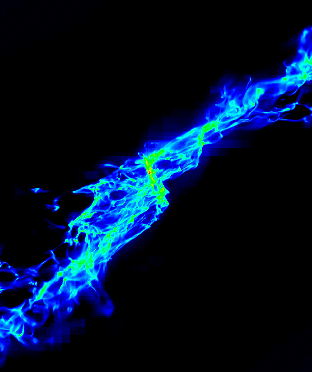 Side-view. Environmental shear also contributes to the cloud changing direction over time, as can be seen from this perspective.
(Link to movie here).
Side-view. Environmental shear also contributes to the cloud changing direction over time, as can be seen from this perspective.
(Link to movie here).
Reorienting MHD shocks
Shocks that form between oblique, magnetized colliding flows (where 'oblique' refers to the collision interface between the flows) reorient normal to the upstream flows and magnetic field, resulting in post-shock filaments that resemble those found in the interstellar medium. To illustrate this effect, here are 2D runs of marginally supersonic flows (mach number M = 1.5) that are colliding along a magnetic field. This magnetic field has a β=1, where β is the ratio of thermal to magnetic pressure. Note, the color bar for these plots give density, and magnetic field lines and velocity vectors are overlaid. The flows are colliding along the x-dimension.MHD case, without cooling
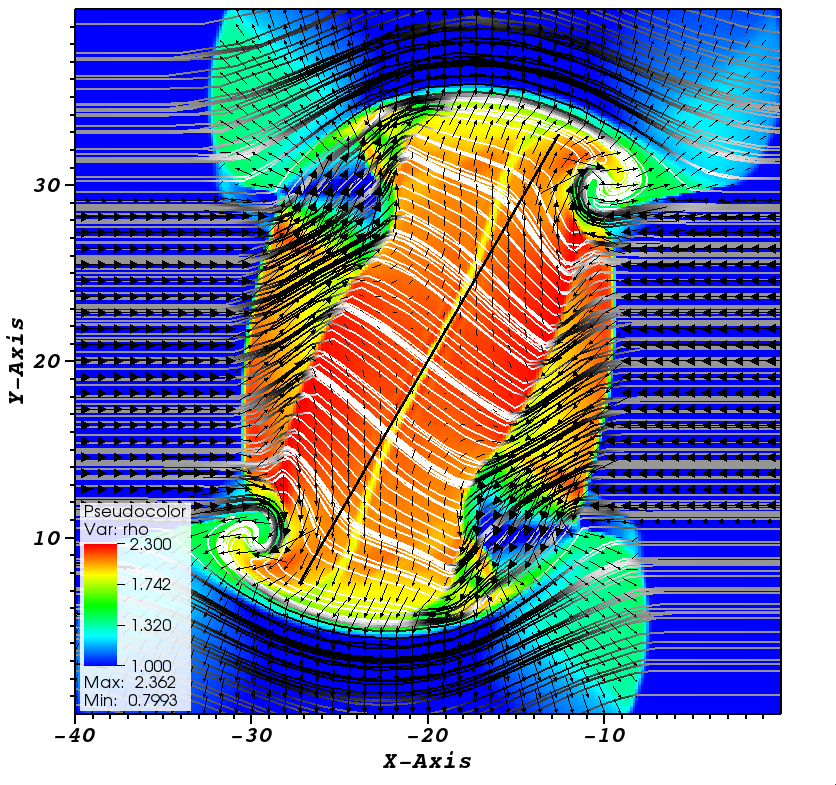
Reorientation begins at the flow-ambient medium boundary and moves inward with time. Note that there is a loss of post-shock pressure support as material escapes into the ambient medium behind the outer, fast shocks. This drives reorientation of those shock layers. The black line shows the initial orientation of the collision interface. (Link to movie here).
Hydro case, without cooling
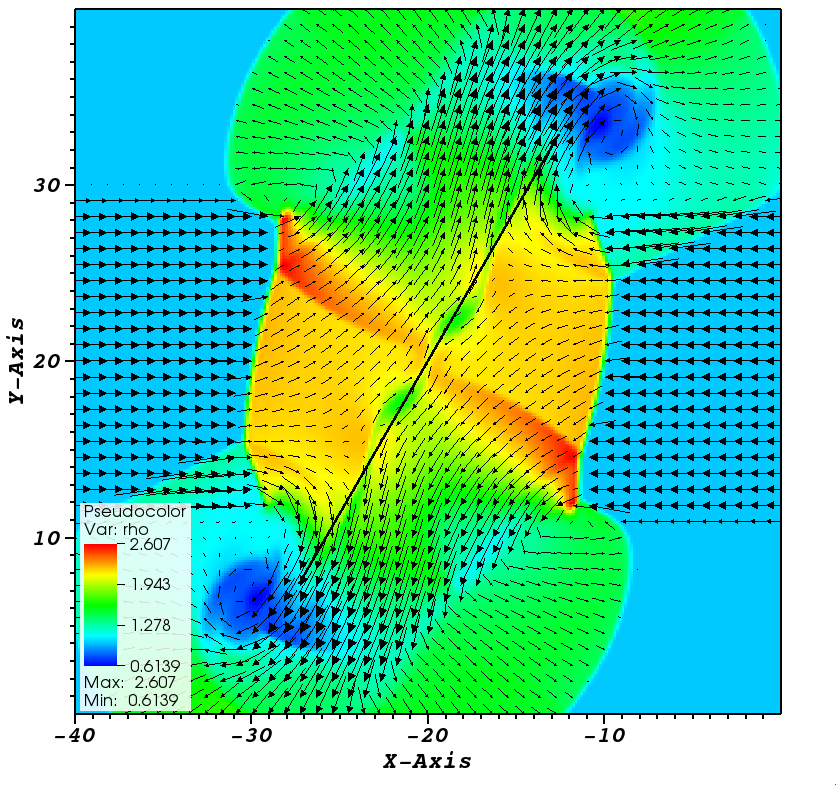 Without magnetic fields, the highest density internal shock layer breaks up from a combination of Kelvin-Helmholtz instability (from the post-shock shear flow), as well as rarefactions that move inward from the ambient medium. The result is a stair-shaped structure, as opposed to a coherent filament like shown in the MHD case above. (Link to movie here).
Without magnetic fields, the highest density internal shock layer breaks up from a combination of Kelvin-Helmholtz instability (from the post-shock shear flow), as well as rarefactions that move inward from the ambient medium. The result is a stair-shaped structure, as opposed to a coherent filament like shown in the MHD case above. (Link to movie here).
MHD case, with cooling
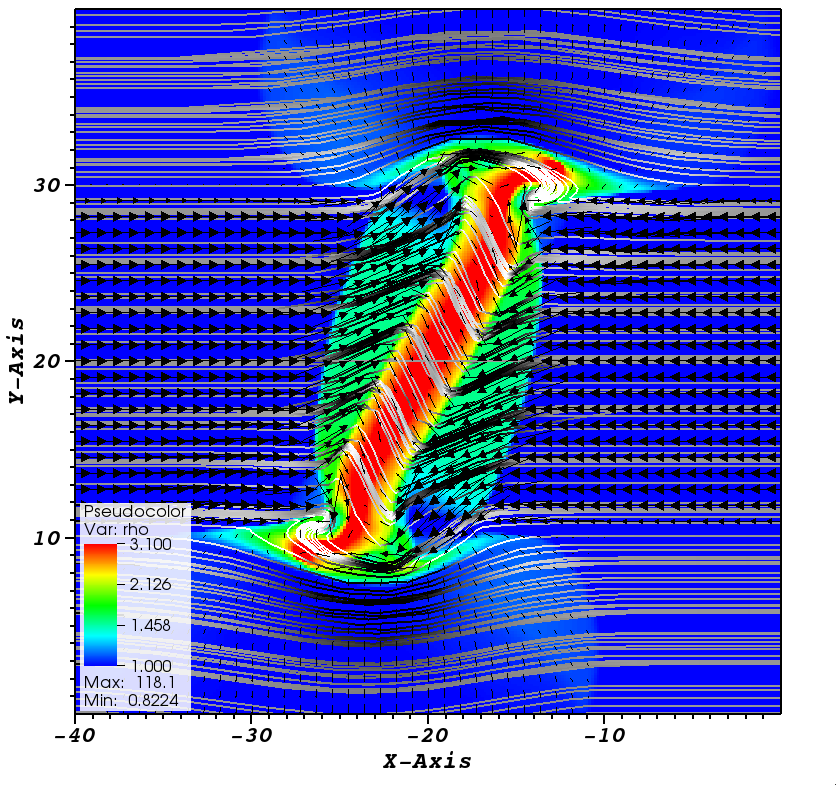 The addition of cooling reduces post-shock thermal support. This in turn results in a narrower collision region and higher post-shock densities. More importantly, reorientation still occurs as in the MHD case above without cooling. A cooling medium is most physically relevant to star-forming regions. (Link to movie here).
The addition of cooling reduces post-shock thermal support. This in turn results in a narrower collision region and higher post-shock densities. More importantly, reorientation still occurs as in the MHD case above without cooling. A cooling medium is most physically relevant to star-forming regions. (Link to movie here).
